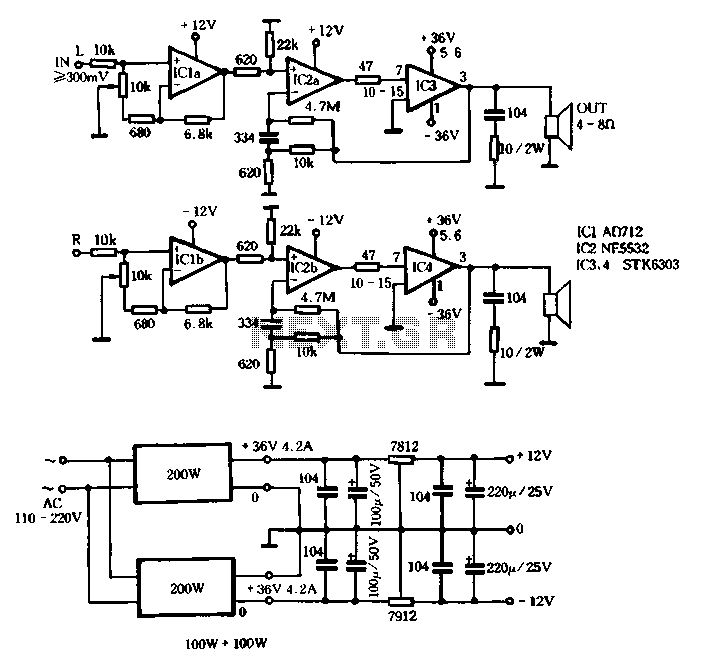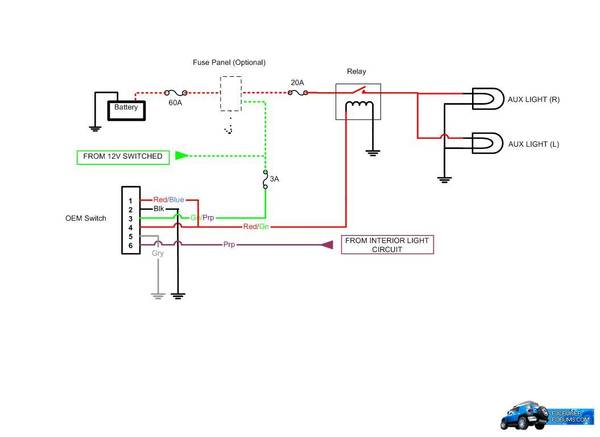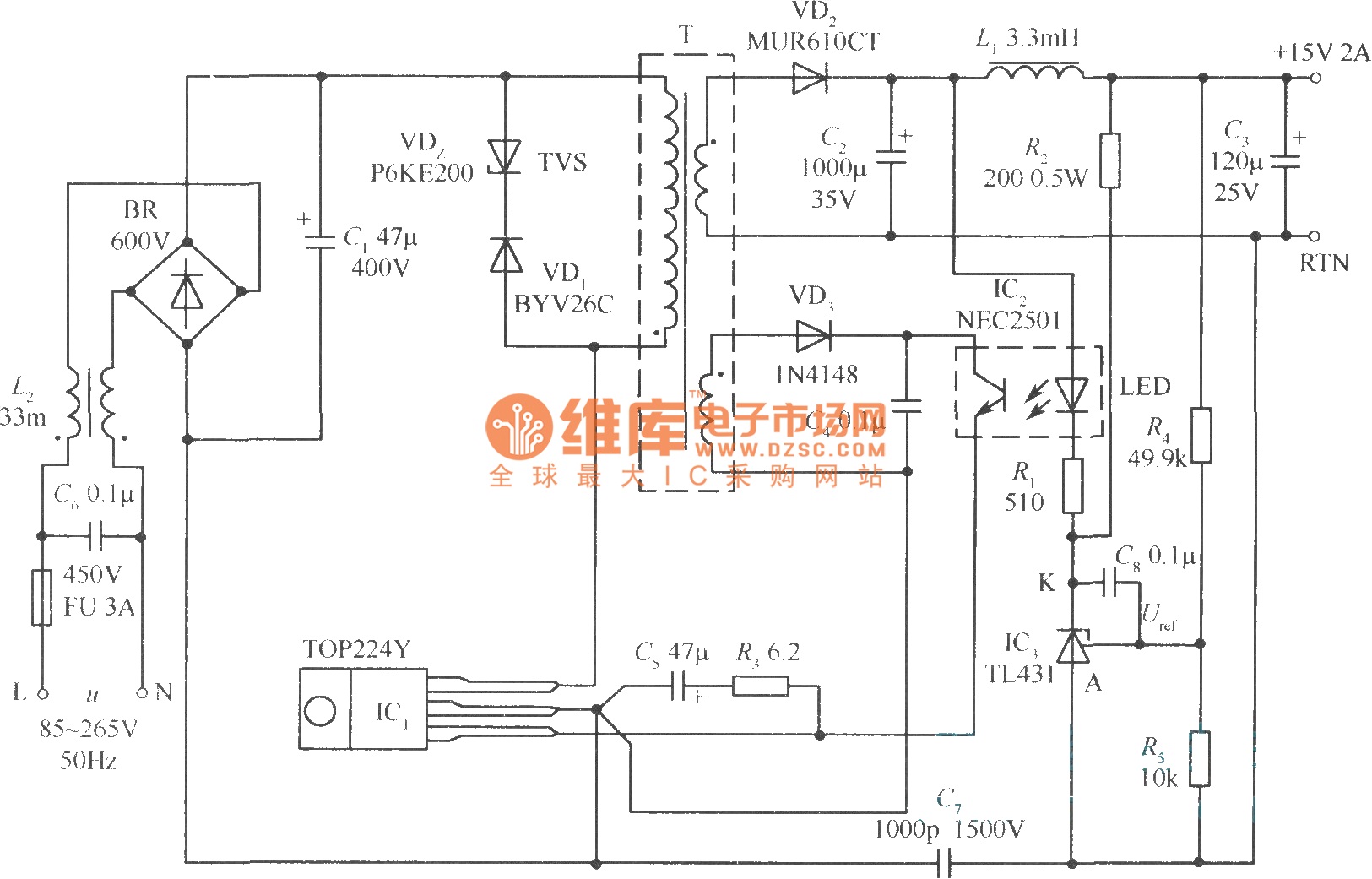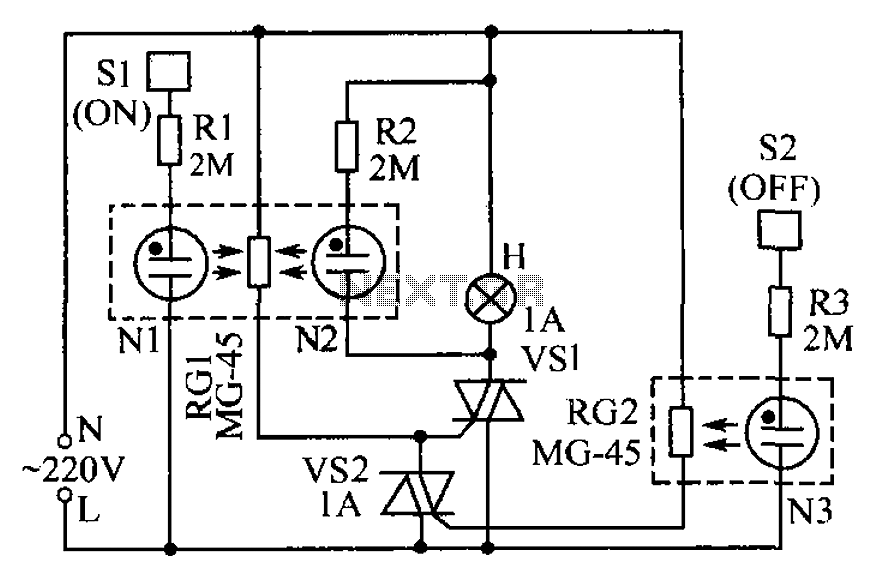
Microphone-Controlled Voice-Activated Switch
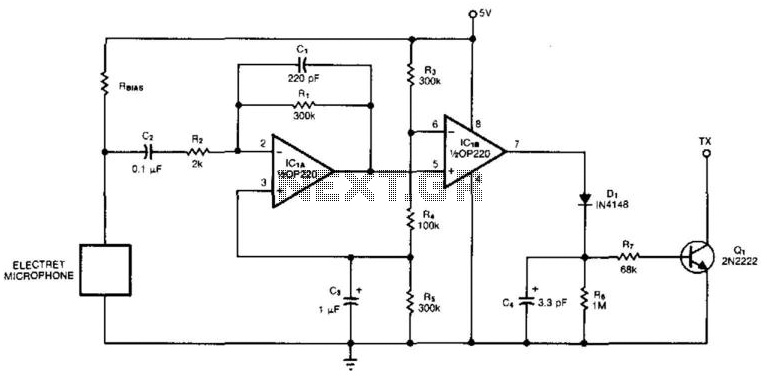
An electret microphone feeds a bandpass filter circuit (IC1A), which subsequently drives a comparator. This comparator activates Q1, a switch that conducts when audio signals from IC1B cause D1, C4, R6, and R7 to bias it ON.
The circuit begins with an electret microphone, which serves as the audio input source. The microphone generates an analog audio signal that is routed to a bandpass filter circuit (IC1A). This filter is designed to allow only a specific range of frequencies to pass through while attenuating frequencies outside this range, thereby enhancing the quality of the audio signal for further processing.
Following the bandpass filter, the filtered audio signal is sent to a comparator. The purpose of the comparator is to compare the incoming audio signal against a reference voltage, determining whether the audio signal exceeds this reference level. When the audio signal is sufficiently strong, the comparator output transitions, activating the subsequent stage of the circuit.
The output of the comparator drives Q1, which functions as a switch. When Q1 is activated, it allows current to flow through the circuit. The conduction of Q1 is influenced by the components D1, C4, R6, and R7. D1 is likely a diode that ensures current flows in one direction, providing protection against reverse polarity. Capacitor C4 may serve to filter out high-frequency noise, while resistors R6 and R7 are likely involved in setting the biasing levels for Q1, ensuring it turns ON when the audio signal from IC1B is present.
This arrangement creates a responsive system that activates Q1 based on the presence of audio signals, allowing for further control or processing of the audio input as required by the overall application. The design effectively integrates the microphone, filtering, comparison, and switching elements into a cohesive audio processing circuit. An electret microphone feeds a bandpass filter circuit (IC1A), then feeds a comparator, which in turn drives Ql. Ql is a switch that conducts when audio from IC1B causes Dl, C4, R6, and R7 to bias it ON.
The circuit begins with an electret microphone, which serves as the audio input source. The microphone generates an analog audio signal that is routed to a bandpass filter circuit (IC1A). This filter is designed to allow only a specific range of frequencies to pass through while attenuating frequencies outside this range, thereby enhancing the quality of the audio signal for further processing.
Following the bandpass filter, the filtered audio signal is sent to a comparator. The purpose of the comparator is to compare the incoming audio signal against a reference voltage, determining whether the audio signal exceeds this reference level. When the audio signal is sufficiently strong, the comparator output transitions, activating the subsequent stage of the circuit.
The output of the comparator drives Q1, which functions as a switch. When Q1 is activated, it allows current to flow through the circuit. The conduction of Q1 is influenced by the components D1, C4, R6, and R7. D1 is likely a diode that ensures current flows in one direction, providing protection against reverse polarity. Capacitor C4 may serve to filter out high-frequency noise, while resistors R6 and R7 are likely involved in setting the biasing levels for Q1, ensuring it turns ON when the audio signal from IC1B is present.
This arrangement creates a responsive system that activates Q1 based on the presence of audio signals, allowing for further control or processing of the audio input as required by the overall application. The design effectively integrates the microphone, filtering, comparison, and switching elements into a cohesive audio processing circuit. An electret microphone feeds a bandpass filter circuit (IC1A), then feeds a comparator, which in turn drives Ql. Ql is a switch that conducts when audio from IC1B causes Dl, C4, R6, and R7 to bias it ON.

